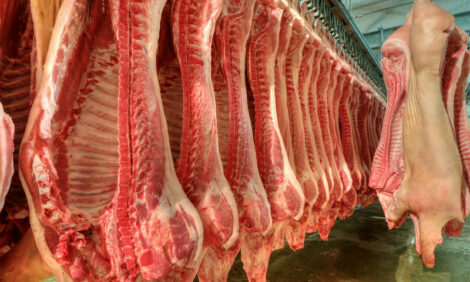



Digging Deeper Into The <em>Hogs and Pigs</em> Report
US - Economist Steve Meyer writes, "First, we wish you all a happy and prosperous 2010! I'd like to say our economic woes were all behind us, but I cannot – even though it appears that 2010 will be far better for pork producers than were 2008 or 2009. Not saying much there, though, am I?"Due to the New Year's Day holiday, a number of USDA reports for last week have yet to be published, leaving our weekly Price and Production Summary with many empty cells and not much useful information. It will return next week.
The reaction to Wednesday's USDA Quarterly Hogs and Pigs report was as I expected – negative. The near-term contracts did not take huge hits and no contracts were near limit down, but summer contracts did lose about $1/cwt on Thursday. That pattern was also as expected, given the Sep-Nov pig crop and winter and spring farrowing intention numbers.
As I have studied the report and my models, it appears to me that US hog slaughter will very likely be less than two per cent lower in 2010 than it was in 2009. The most critical assumption I make in arriving at that conclusion is that year-on-year litter size growth will continue at two per cent. As Figure 1 shows, the number of pigs saved per litter in September-November was the largest on record for that quarter and the second largest quarterly figure ever, just 0.01 pigs/litter lower than the record-high 9.70 seen in the June-August 2009 period.

Can this growth rate be maintained much longer? I have my doubts, but until we see some lessening of the trend, I think we have to assume it will continue. I have heard of some pretty severe porcine reproductive and respiratory syndrome (PRRS) problems in some areas since the cold weather set in and that could impact the number of pigs saved per litter this winter. But we have PRRS problems every year and unless this one is much worse than in the past, higher genetic capabilities in our maternal lines could well offset the impact.
The inescapable truth
I think the inescapable truth is that lower hog supplies are not going to move us to consistent profitability in 2010. Supplies simply are not going to be enough lower to make much difference. Historically, a one per cent reduction in supplies would cause a two per cent% increase in hog prices – all other factors held constant. That would mean four per cent or so higher hog prices this year, but what is the 'right' price to base the four per cent increase on? 2009 prices were obviously impacted negatively by H1N1 influenza issues; 2008 prices were obviously impacted positively by unprecedented exports.
This is where economics becomes a lot more artistic than scientific, since even well-constructed econometric models do not handle these shocks very well. We have to make some adjustments for demand shifts. To arrive at 'corrected' 2009 prices from which to compute 2010 forecasts, I am using actual prices for Q1-'09 and adding $5/cwt, $11/cwt and $3/cwt to Q2 through Q4 prices, respectively. Those changes leave my 2009 base prices $3/cwt higher than 2008 prices in Q1, still substantially lower than Q2 and Q3 in 2008, and virtually even with Q4 2008. I'm comfortable with those relationships pending new data becoming available.
My slaughter and price forecasts as well as those of the University of Missouri, Iowa State University and the Livestock Marketing Information Center appear in Figures 2 and 3.
Which brings us to the key point for 2010 markets: How will US consumers react to a slowly-improving economy? Are the spending habits of 2008 and 2009 now the norm or will the 'consume now, worry about paying later' attitude return?
I think it is more likely that exports will be the big help, although the past week has seen some ugly developments. Taiwan, in effect, voided its agreement to resume US beef imports by placing tight restrictions on shipments for any country that has had bovine spongiform encephalopathy (BSE) in the past 10 years. Russia announced that it would block chicken imports from any country that uses chlorine as a disinfectant. That means, in essence, no exports of US chicken meat to Russia. Remember how the pork and hog markets were demolished the last time that happened?
The US is still in a great position to supply pork to a hungry world. Whether we are allowed to do that on economic terms remains to be seen. Unfortunately, exports are still based much more on politics and security issues than on current economic conditions.










